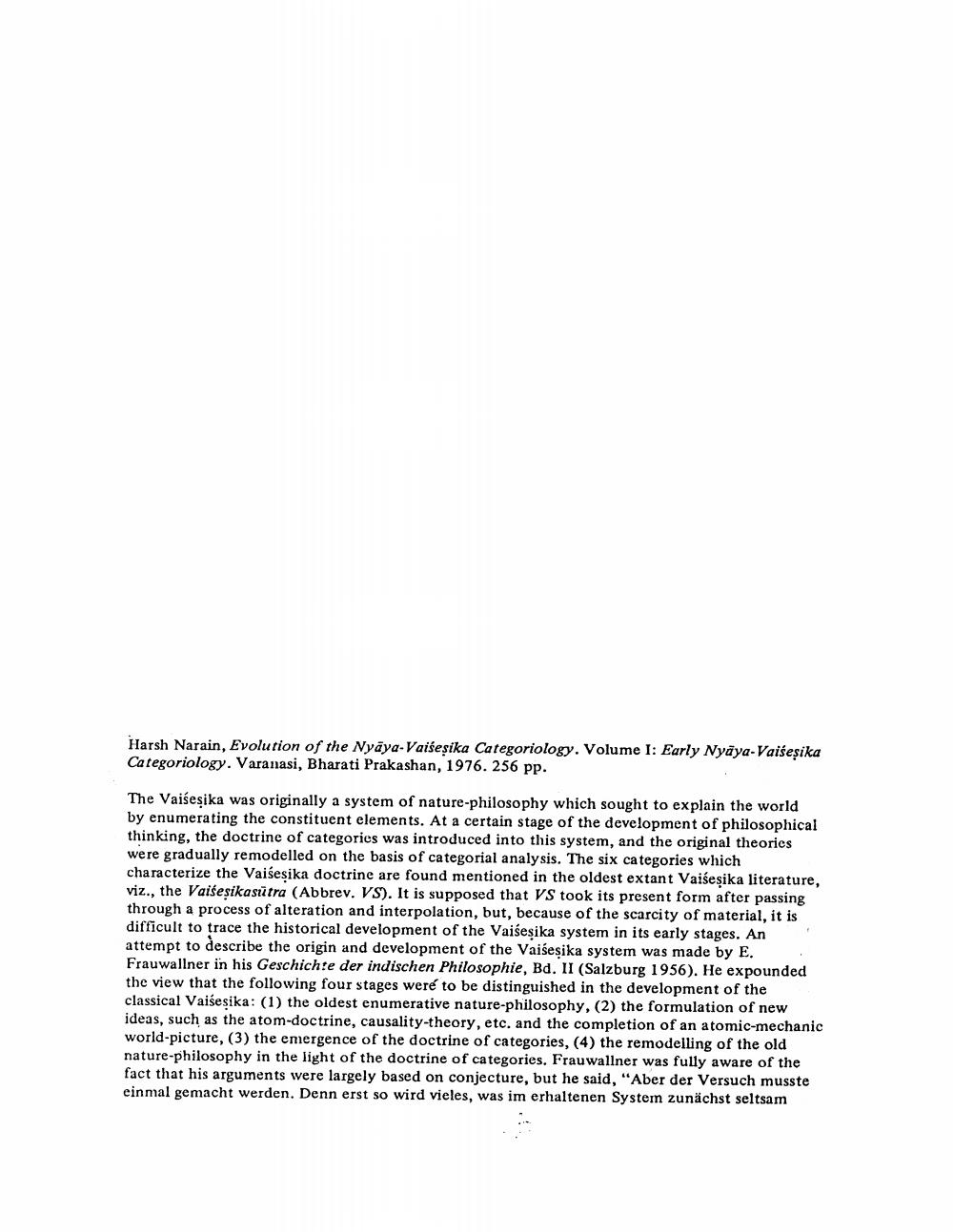________________
Harsh Narain, Evolution of the Nyāya-Vaiseșika Categoriology. Volume I: Early Nyāya-Vaiseșika Categoriology. Varanasi, Bharati Prakashan, 1976. 256 pp.
The Vaišesika was originally a system of nature-philosophy which sought to explain the world by enumerating the constituent elements. At a certain stage of the development of philosophical thinking, the doctrine of categories was introduced into this system, and the original theories were gradually remodelled on the basis of categorial analysis. The six categories which characterize the Vaiseșika doctrine are found mentioned in the oldest extant Vaiseșika literature, viz., the Vaisesikasutra (Abbrev. VS). It is supposed that VS took its present form after passing through a process of alteration and interpolation, but, because of the scarcity of material, it is difficult to trace the historical development of the Vaišeşika system in its early stages. An attempt to describe the origin and development of the Vaisesika system was made by E. Frauwallner in his Geschichte der indischen Philosophie, Bd. II (Salzburg 1956). He expounded the view that the following four stages were to be distinguished in the development of the classical Vaišesika: (1) the oldest enumerative nature-philosophy, (2) the formulation of new ideas, such as the atom-doctrine, causality-theory, etc. and the completion of an atomic-mechanic world-picture, (3) the emergence of the doctrine of categories, (4) the remodelling of the old nature-philosophy in the light of the doctrine of categories. Frauwallner was fully aware of the fact that his arguments were largely based on conjecture, but he said, "Aber der Versuch musste einmal gemacht werden. Denn erst so wird vieles, was im erhaltenen System zunächst seltsam




